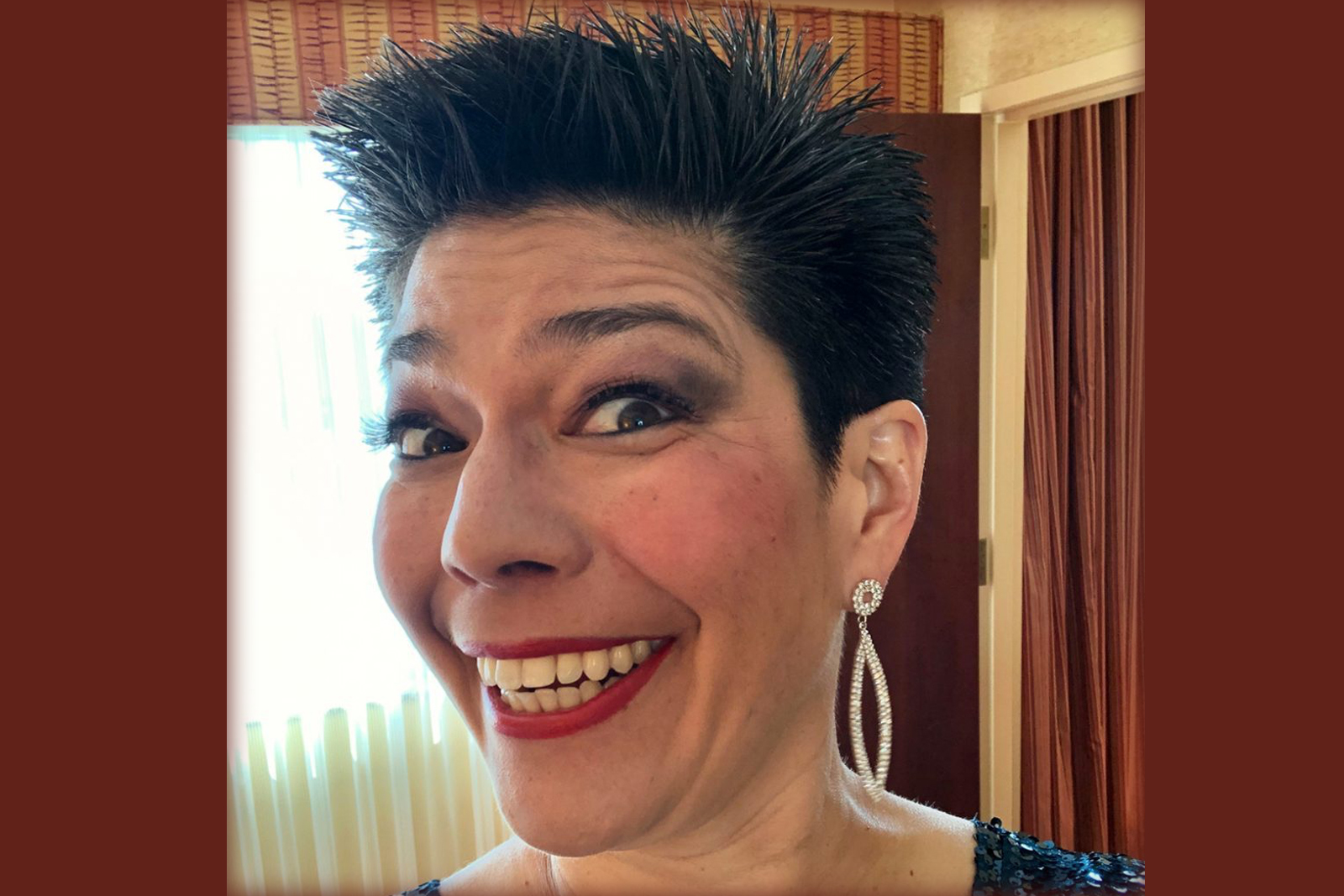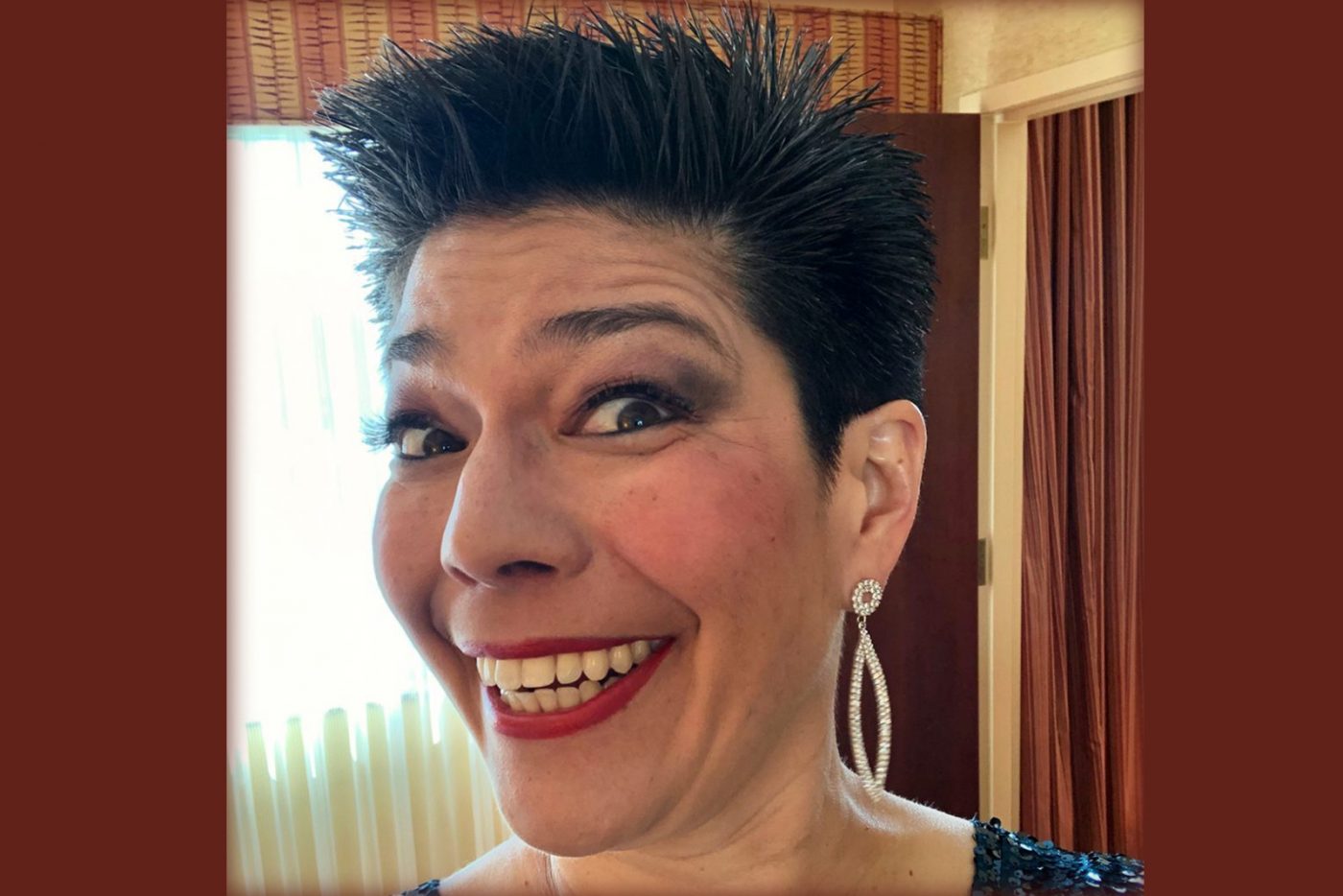Japanese Drag Queen
Asian, gay, female, military retiree, Air Force pilot, spouse, daughter, sister, aunt … aren’t we more than labels?

I discovered female barbershop late in life. And thank God I did. There is something so welcoming, energizing, supportive and addicting about the “cult” of barbershoppers. While there are many barbershop organizations, I joined the collective known as Sweet Adelines International.
These female a cappella singers singing in the barbershop style of music remain the most positive and encouraging group I have ever been a part of.
As a Type A competitor, the fact that most Sweet Adeline choruses attend competitions was icing atop an already-sweet treat.
Sweet Adeline performers get judged or graded in 4 different categories: sound, music, expression and showmanship. The first 3 categories focus on the production of the song — how well the singers individually and collectively sing, tune, interpret, dictate, emote, arrange finesse, communicate and deliver the lyrical story.
That fourth category, though, that’s the focus for today.
Showmanship is an evaluation of the ensemble’s command of the stage, their characterization and energy during the performance and how unified their visual presentation is. Within the showmanship category is “makeup and grooming.”
Because barbershop is a team sport, individual makeup application is done to create one complete chorus look and NOT to spotlight any one individual performer. And with that, the purpose of the makeup is to define facial features so the audience and the judges can see the subtle facial expressions of communication during story singing.
And because our facial expressions are subtle and because the audience and judges are a fair distance away and because we sing under bright stage lights, the individual performer has to increase the vibrancy and intensity of stage makeup.
Translation: archaeologists could dig through the depths of makeup caked on our faces.
I'm at the regional competition with my chorus, in the middle of stage prep which means I am slathering on makeup like a mason buttering a wall with mortar.
Brown paste that’s supposed to be the base layer.
Red stuff just for my cheeks.
Purple powder on top of my eyelids.
A pencil for my eyes that is always nearly the scribe for a story where I blind myself with it.
It may not be difficult to discern, but I’m about as familiar with makeup application as I am bricklaying.
Because of my makeup prowess, a makeup chaperone hovers over my shoulder making sure I have enough makeup on and that I match the layers upon layers of product on her face.
I’m almost done applying the paint and spackle to my face and my phone rings.
With my makeup trowel in one hand and a vat of mortar in the other, I use a random knuckle to accept the call on speaker phone.
It’s my friend Beth from high school who’s coming to watch us compete. She’s calling to ask if she’ll be able to find me on stage.
It’s a fair question since we haven’t seen each other in person in a looooong time and I would be dressed identically to the woman next to me on stage ... and the woman next to her ... and the woman next to ... you get it. Basically 70 women all wearing the same thing.
I start describing where I’ll be standing when the chorus is on stage. I quickly realize I’m screwing up the stage lefts and rights and audience member stage lefts and rights, which I think are just lefts and rights.
So, I need to visualize what Beth will see from the audience.
I look up at the mirror.
Ho-ly vampire, batman!
In the mirror, I don’t see my reflection.
Let me rephrase: I don’t see me in the reflection.
What I see in the mirror is someone who has overdone it with makeup (think Glamour Shots meets PT Barnum).
Lefts and rights no longer matter because I have a faster way for Beth to find me. I tell her what to look for by telling her precisely what I see in the mirror.
“Uhhhhhh, just look for the Japanese drag queen.”
I certainly mean no offense to the Japanese (I am half Japanese) or to drag queens (I wish I could look that beautiful). It’s just an honest assessment of what I look like and it serves the purpose of telling Beth how to find me.
“Oh come on, I know you’re gonna look gorgeous.”
“Beth, thank you, but I’m telling you, if you want to find me on the stage, just look for the Japanese drag queen.”
Fast-forward to after the competition, I find Beth and we catch up on life. And then, the question I really need answered, “So, were you able to find me on stage?”“Yea.”
“And, how did you find me?”
Beth’s quiet and sheepish response is, “Japanese drag queen.”
I didn’t get hung up on my Japanese drag queen appearance because how I look as an individual is how I need to look in order to complement the chorus unit appearance. And there is more to me than just my appearance.
My real contribution is my singing voice, the notes I offer to complement the notes being sung by the rest of the chorus, the notes that complete our chords.
Many times, we get caught up on our appearance, our labels and external identifiers instead of realizing that we are more than those superficial labels and identifiers.
We all have a powerful contribution to offer. Our own notes to complete the chords with the notes from others around us.
So no matter how much mortar you trowel on your face, reflect on the fact that your makeup is determined by who you are inside, not how you appear on the outside.

